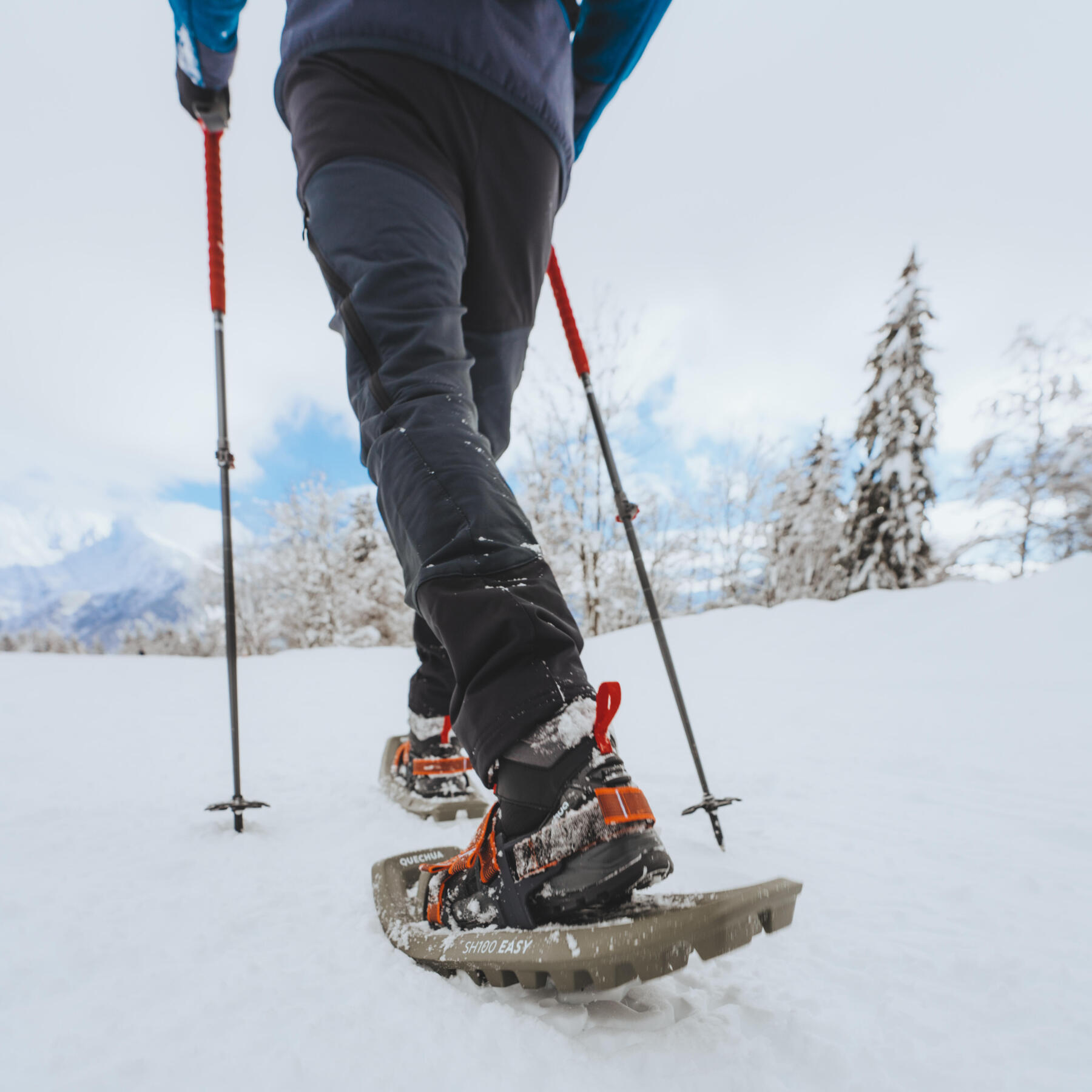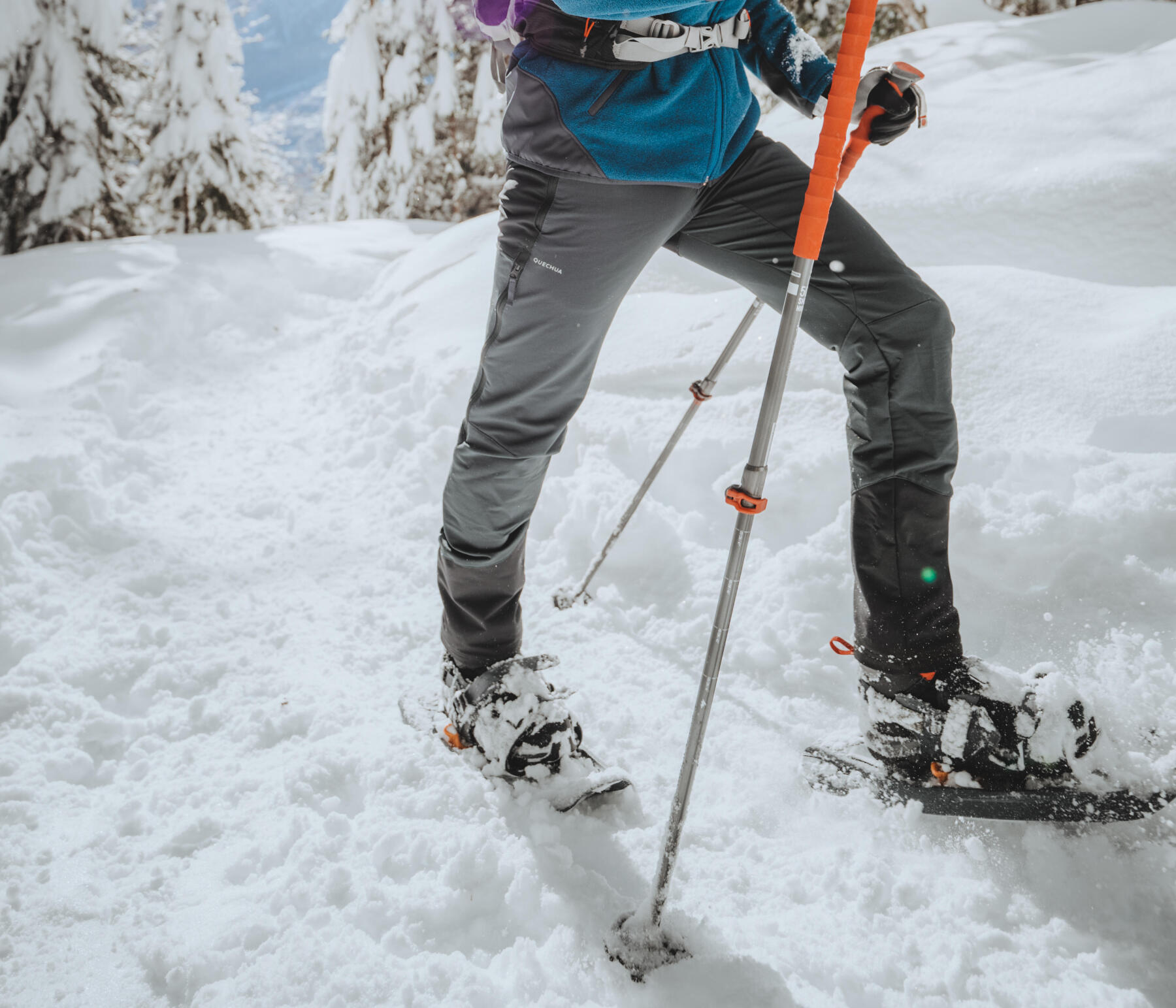CHOOSING THE RIGHT PAIR OF SNOWSHOES
The bearing capacity of a snowshoe, i.e. its capacity to stay on the surface of the snow, is a function of the weight of the walker (plus the weight of their backpack). This is the first criteria you should take into account when choosing your pair of snowshoes.
Your level and intensity of practice, the type of terrain on which you are going to walk in snowshoes, will then help you choose between many snowshoe models. Support, ease of use, comfort, safety, lightness, each model has advantages to be favoured according to your needs.
Please ask for advice to help you find the ideal pair of snowshoes!
















